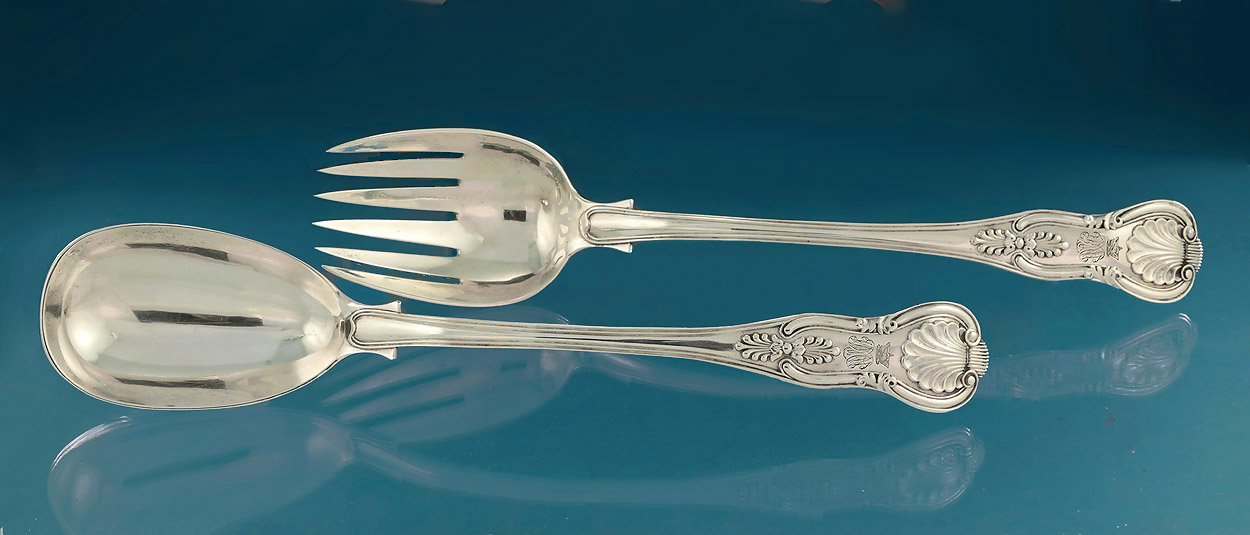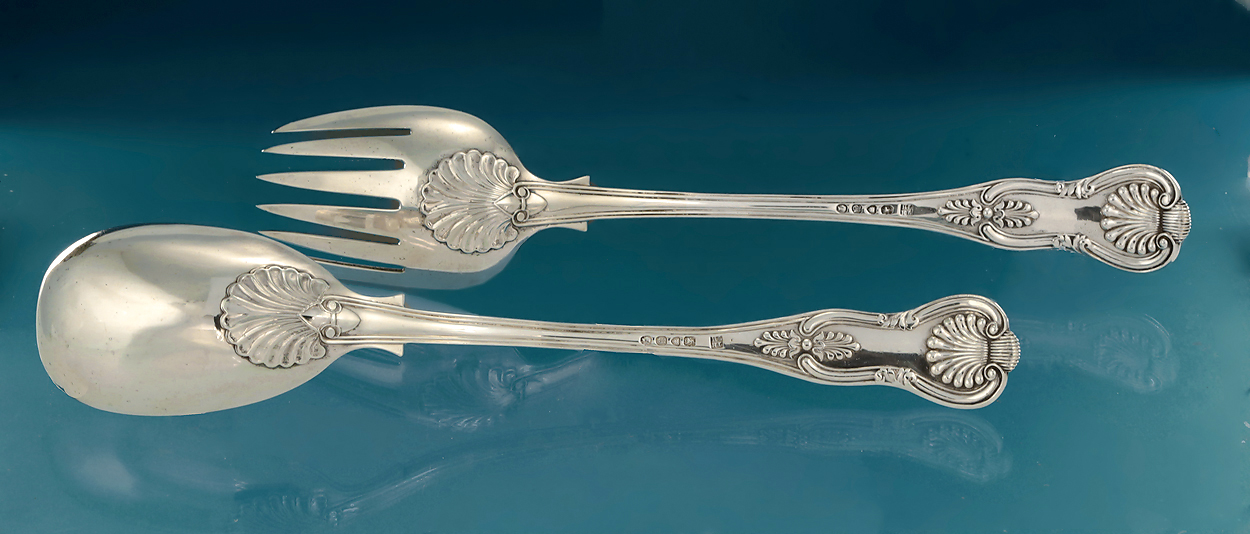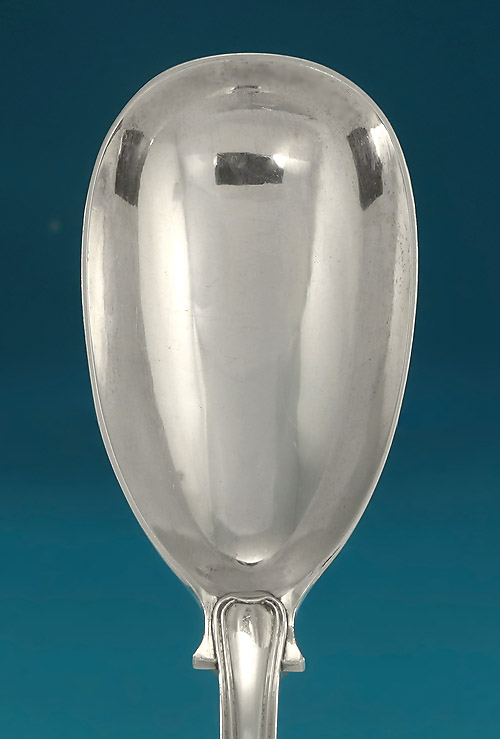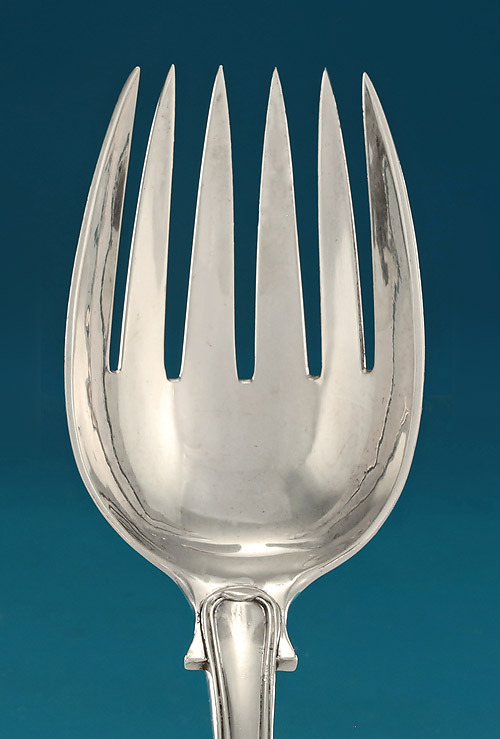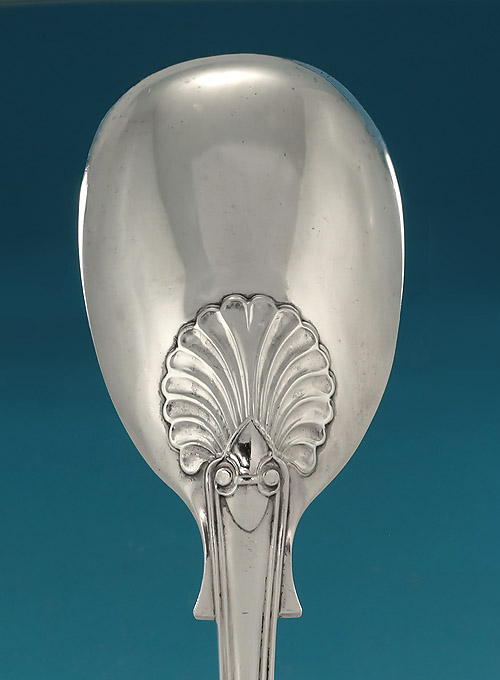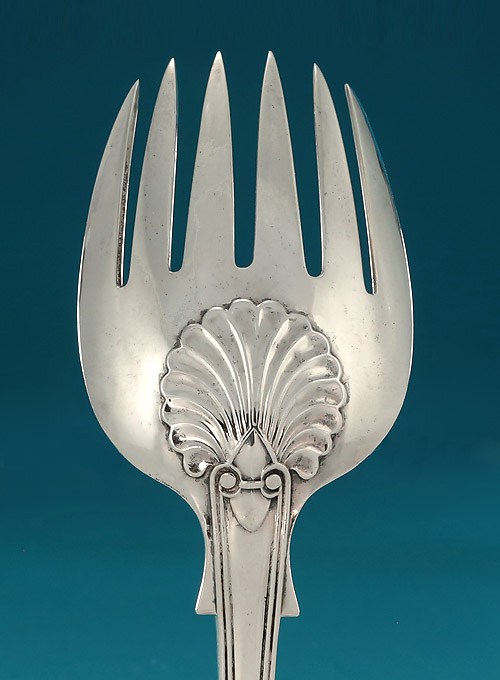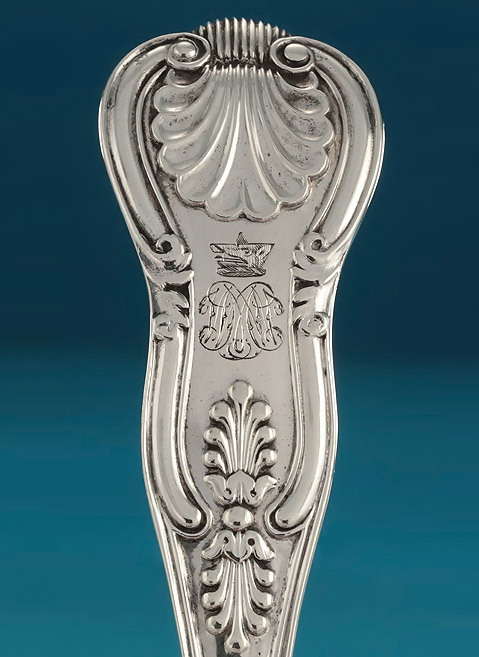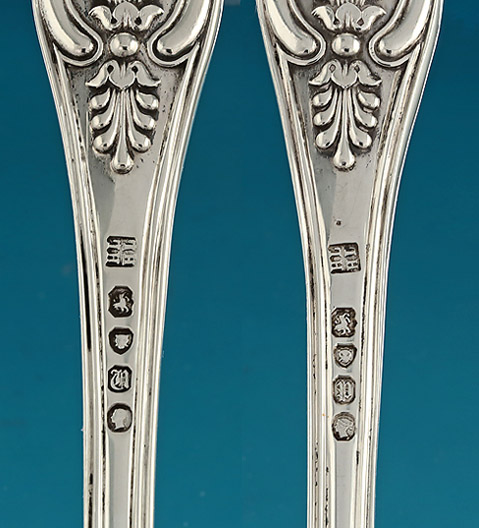|
Of heavy gauge silver, the spoon and shaped 'runcible fork' double-struck in the King's pattern
with a concave shell to the terminals, a raised anthemion to the shaft, and concave shell to the heels,
each terminal also crested with a boar's head erased (possibly being cut by a knife)
over a contemporary conjoined cypher WMW
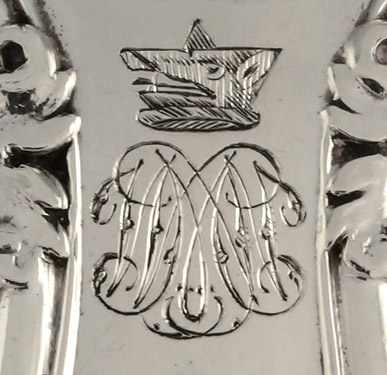
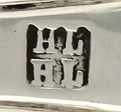
Condition : Excellent with minor expected wear appropriate to age and usage; very crisp marks
12" Long / 14.9 oz.
PRICE : Please Inquire
#7868
Although the consumption of raw vegetables has been considered beneficial since Greco-Roman times,
this practice was not common among the upper classes in England until the late 18th century.
The influx of émigrés into England after the French Revolution popularized salads in the French manner
and brought about the manufacture of elegant English silver utensils,
both for serving and eating.
Many consist of a spoon which has been altered in to fork form
These forked spoons are sometimes referred to as a "runcible spoon".
"Runcible" is also used as a nonsense word, introduced in Edward Lear's "The Owl and the Pussycat" :
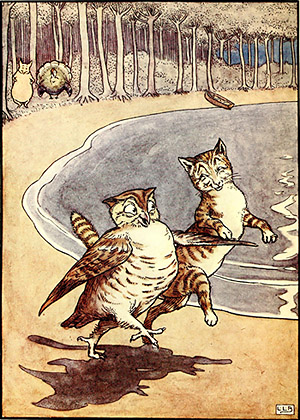
"So they took it away, and were married next day
By the Turkey who lives on the hill.
They dined on mince, and slices of quince,
Which they ate with a runcible spoon;
And hand in hand, on the edge of the sand,
They danced by the light of the moon..."
(Edward Lear, 1871, Illustration L. Leslie Brooke, 1910)
|
